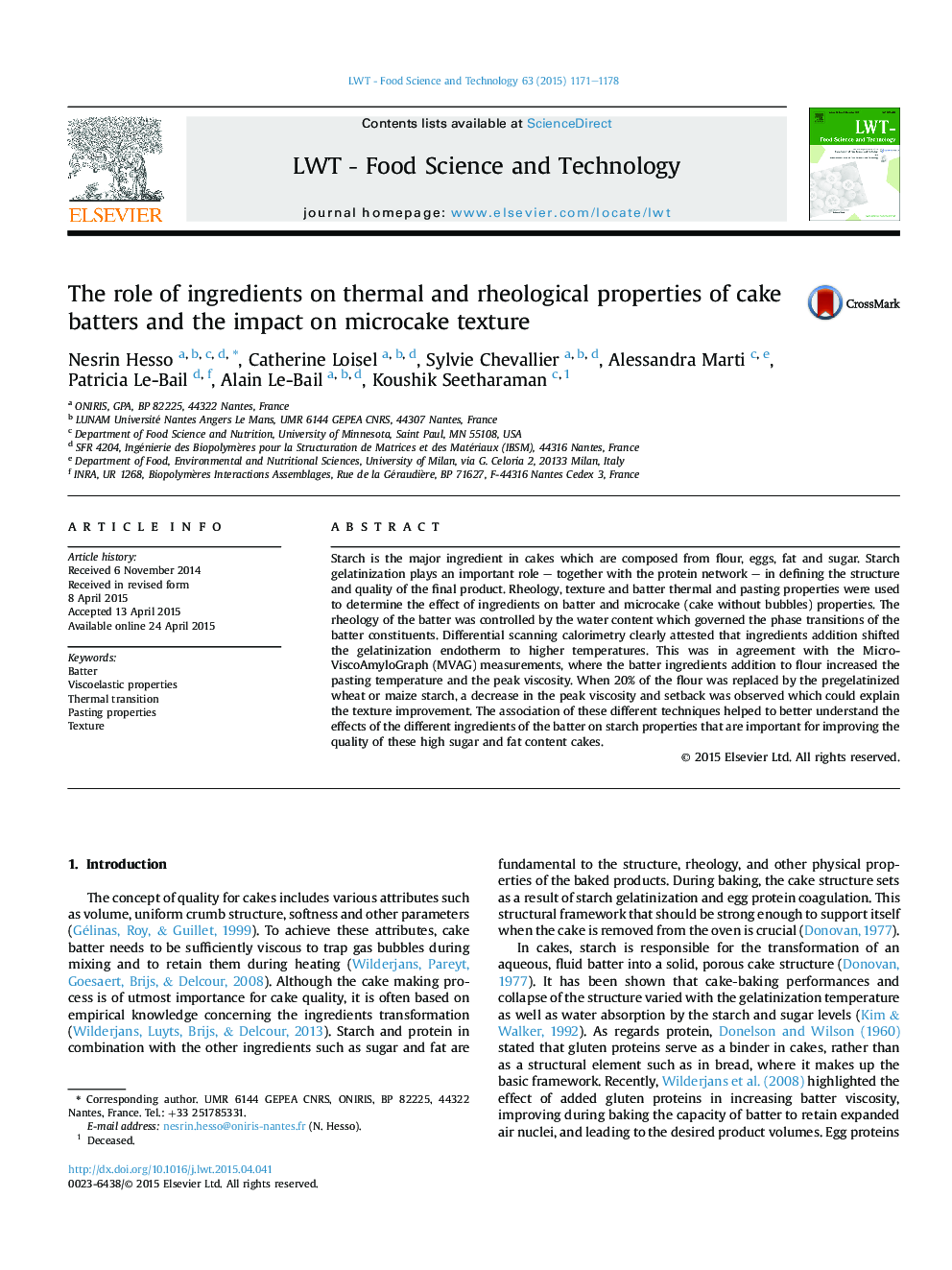| Article ID | Journal | Published Year | Pages | File Type |
|---|---|---|---|---|
| 6400506 | LWT - Food Science and Technology | 2015 | 8 Pages |
â¢Cake batters are complex systems due to their composition (flour, eggs, sugar and fat).â¢Viscoelastic properties of batter are controlled by the water availability, fat and egg presence.â¢Batterâcrumb transition shifted to high temperature by ingredients interactions during baking.â¢Pregelatinized starch addition affected the viscoelastic and thermal properties of the batter.â¢Soft texture of cake without bubbles was related to the presence of pregelatinized starch.
Starch is the major ingredient in cakes which are composed from flour, eggs, fat and sugar. Starch gelatinization plays an important role - together with the protein network - in defining the structure and quality of the final product. Rheology, texture and batter thermal and pasting properties were used to determine the effect of ingredients on batter and microcake (cake without bubbles) properties. The rheology of the batter was controlled by the water content which governed the phase transitions of the batter constituents. Differential scanning calorimetry clearly attested that ingredients addition shifted the gelatinization endotherm to higher temperatures. This was in agreement with the MicroViscoAmyloGraph (MVAG) measurements, where the batter ingredients addition to flour increased the pasting temperature and the peak viscosity. When 20% of the flour was replaced by the pregelatinized wheat or maize starch, a decrease in the peak viscosity and setback was observed which could explain the texture improvement. The association of these different techniques helped to better understand the effects of the different ingredients of the batter on starch properties that are important for improving the quality of these high sugar and fat content cakes.
